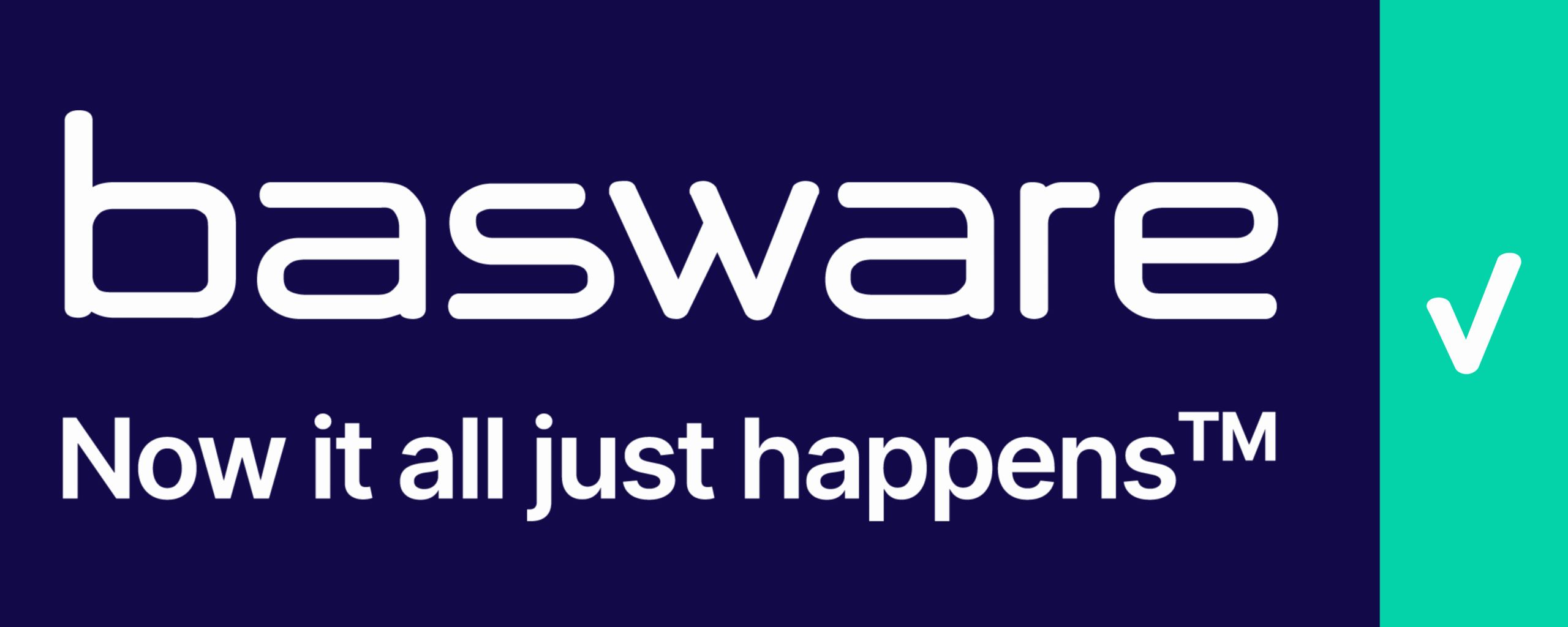VAT Relevance of Transfer Pricing Adjustments – Article 13, paragraph 1, of D.P.R. No. 633/1972
Context: The inquiry involves the company ALFA, part of the BETA Group, engaged in the global production and distribution of electrical devices and components. ALFA distributes products obtained from DELTA, a company without a permanent establishment in Italy, identified for VAT purposes through a tax representative.
Key Details:
- ALFA’s distribution activities are governed by a Distribution Agreement with DELTA, which allows for periodic price adjustments based on transfer pricing methodologies to ensure compliance with arm’s length principles.
- Adjustments are calculated quarterly or at the end of the tax period based on ALFA’s operating margin compared to a predetermined target.
- Adjustments can result in either an increase or decrease in the provisional selling price, generating corresponding credit or debit notes.
VAT Treatment:
- Import and Intra-Community Acquisitions: ALFA manages VAT obligations through reverse charge mechanisms or intra-community acquisition protocols depending on whether goods are imported from DELTA or acquired from EU member states.
- Previous Tax Audits: The Italian Revenue Agency previously contested the VAT relevance of transfer pricing adjustments in earlier tax periods, leading to a revision of the Distribution Agreement to clarify the documentation of adjustments.
Legal and Regulatory Framework:
- Article 13, paragraph 1 of D.P.R. No. 633/1972 establishes that the taxable base for sales includes all amounts owed according to contractual terms, emphasizing the need for direct correlation between the price adjustments and the underlying transactions.
- European Court of Justice (ECJ) rulings support the principle that VAT relevance requires a direct link between the price adjustments and the original supply of goods/services.
Agenzia delle Entrate’s Position:
- Acknowledges the necessity of a direct connection between price adjustments and the original transactions for VAT purposes.
- Confirms that transfer pricing adjustments can be relevant for VAT if they are explicitly stipulated in contracts and directly affect the pricing of the original transactions.
- If these conditions are met, adjustments are subject to VAT, with ALFA required to issue self-invoices reflecting the adjustments.
Conclusion:
The adjustments outlined in the revised Distribution Agreement between ALFA and DELTA are deemed relevant for VAT purposes, fulfilling the criteria established by Italian VAT law and European regulations. The VAT treatment of these adjustments, including the issuance of credit or debit notes, aligns with the established legal framework.
Source: agenziaentrate.gov.it
Other newsletters
ECJ Cases referred to
Working papers issued by the VAT Expert Group and the VAT Committee
UNOFFICIAL TRANSLATION
Response No. 214/2025
Subject: VAT Relevance of Transfer Pricing Adjustments – Article 13, paragraph 1, of D.P.R. No. 633/1972.
With the request for clarification specified in the subject, the following QUESTION has been presented:
The company ALFA (hereinafter referred to as the “applicant” or the “company”) is a company that is part of the BETA Group (hereinafter referred to as the “Group”), whose activity consists of the global production and distribution of a significant type of electrical devices, electro-optics, interconnection systems, assembly connectors, and wireless products.
In particular, the applicant carries out the distribution of terminals and connectors to the “Industrial,” “Communication,” and “Transportation” divisions of the Group, previously purchased from the company DELTA. DELTA, which has no permanent establishment in Italy and is identified for VAT purposes through a tax representative under Article 17, paragraph 3, of D.P.R. No. 633/1972, plays a very significant role in the global management structure of the Group, managing both the product portfolio, the commercial/distribution network, and the development of new product technologies, as well as negotiations with third-party customers in Europe, the Middle East, and Africa (EMEA).
Currently, the commercial relations between DELTA and ALFA are governed by the “Distribution Agreement” signed on ______________, effective from ______________, which has replaced the previous contract between the same parties, which ceased to be effective on the date of signing the new agreement mentioned above.
From the same contract, it emerges that the initial price of the products sold or purchased from DELTA is provisional and may be subject to revision on a quarterly basis or at the end of the tax period through “Periodic Adjustments,” which aim to ensure that the agreed prices for the purchase of goods are adjusted to achieve arm’s length results.
In this case, with reference to the distributor (ALFA), the Group’s transfer pricing policy provides for the use of the Transactional Net Margin Method (TNMM), which is a profit-based method calculated based on the “Return on Sales” (ROS), given by the percentage ratio between operating income and production value.
Using this method, once ALFA’s operating margin on sales achieved at the end of the reference period is calculated, it is compared with the target ROS provided by the Transactional Net Margin Method: if the two values do not align, price adjustments of the supplies are made to reach the target net margin of “arm’s length.”
It is evident that, based on this methodology, once ALFA’s economic results for the period are known, to achieve the arm’s length net margin, the selling prices of the products between the parties are determined “ex post.”
Therefore, based on the Distribution Agreement, if ALFA’s profit margin is higher than the arm’s length value, DELTA will issue an increase note to ALFA for the provisional selling price of the goods; conversely, if ALFA’s profit margin is lower than the arm’s length value, DELTA will issue a decrease note for the provisional sale price of the same goods.
The currently effective Distribution Agreement specifies, in point 3.3, that once DELTA has calculated the adjustments (transfer pricing adjustments), it will issue, as appropriate, at the end of each quarter, a credit or debit note accompanied by supporting documentation, consisting of a list of the relevant invoices and the adjustment of the amounts allocated to the individual transactions, referred to as a breakdown. This point also indicates that notification of the appropriate adjustment must be communicated within 45 days from the end of the quarter, while point 3.2 provides that payment must be made no later than 60 days from receipt of the invoice or as otherwise agreed between the parties.
The sales that DELTA makes to ALFA can involve both goods already present in Italy (following imports made by DELTA) and goods from other EU member states.
In the first case, pursuant to Article 17, paragraph 2 of the D.P.R. No. 633/1972, as these are transfers involving a purchaser established in Italy and a seller not established or resident within the territory of the State, the VAT due is paid by ALFA through the reverse charge mechanism, integrating the invoices received from DELTA with a single monthly self-invoice, accompanied by a list of the same invoices issued during the reference period to which the self-invoice refers.
In the second case, the applicant makes an intra-community purchase of goods under Article 38 of Decree Law No. 331/1993, for which it will proceed to integrate the document with VAT and to record the invoices received both in the sales register and in the purchases register pursuant to Articles 46 and 47 of Decree Law No. 331/1993.
The company highlights that the transfer pricing adjustment operations related to the previous Distribution Agreement with DELTA have been subject to verification by the Revenue Agency, which ended with the issuance of two assessment notices relating to previous tax periods, in which, contrary to what the two companies believed, the assessing office contested the VAT relevance of the adjustments to the taxable base of the commercial transactions between them concerning transfer pricing adjustments and the consequent deduction of the same tax.
As a result, the Local Distribution Agreement between DELTA and ALFA was revised and replaced on __________ with the signing of a new agreement, which specified, unlike the previous one, that an analytical list of the invoices to which the transfer pricing adjustments refer should be indicated, and that the distribution of the same on the provisional prices related to the sale of products initially invoiced should be specified in detail through the preparation of a specific document called a breakdown.
In light of the new contract, ALFA received on __________ two increase notes issued by DELTA, which adjust the selling prices of the products subject to national sales between the two companies that were then incorporated and computed within the relevant transactions for the cumulative self-invoice issued on __________.
In view of the above considerations, the Applicant intends to request confirmation that the Periodic Adjustments, as governed by the Distribution Agreement, represent a variation in the consideration for the sale of goods relevant for VAT purposes, for which the documentation obligations and rights provided for in Article 26 of D.P.R. No. 633/1972 exist, and consequently, that the variation notes issued by DELTA on __________ to ALFA are subject to the reverse charge regime under Article 17, paragraph 2, of D.P.R. No. 633/1972.
INTERPRETATIVE SOLUTION PROPOSED BY THE TAXPAYER
Article 13, paragraph 1 of D.P.R. No. 633/1972, reflecting the provisions of Article 73 of Directive No. 2006/112/EC of November 26, 2006, establishes that: “The taxable base for the sale of goods and the provision of services consists of the total amount of the consideration due to the seller or service provider according to the contractual conditions, including the charges and expenses related to the execution and the debts or other charges towards third parties assumed by the purchaser or client, increased by the integrations directly related to the amounts due from other parties.”
Thus, it aims to delineate the correct identification of the taxable base for VAT purposes, relating it, first of all, to the total amount of the consideration due to the seller of the goods or the service provider according to the contractual norms.
In this regard, the jurisprudence of the CJEU has expressed itself on various occasions, not only affirming that there must be a direct connection between the consideration and the sale or provision (judgment of March 27, 2014, case C-151/13) but also clarifying that the monetary value of a transaction relevant for VAT purposes is a subjective value, since the taxable amount is the consideration actually received, not an estimated value according to objective criteria (judgments in cases C-230/87, joined cases C-249/12 and C-250/12, C-549/11, and joined cases C-621/10 and C-129/11).
In the specific case, according to ALFA, the direct connection can be considered existing when the contract between seller and buyer provides that the adjustment constitutes a correction of the price agreed upon by the parties for the specific transactions previously carried out, considering that, according to the same CJEU (judgment of January 20, 2005, case C-412/03), the circumstance that an economic operation is carried out at a price higher or lower than the cost price is irrelevant for the qualification of that operation as a “transaction for consideration,” presupposing for this last notion solely the existence of a direct link between the sale of goods or the provision of services and the consideration actually received by the taxpayer.
To support this thesis, the European Commission, in Working Paper No. 923 of 2017, states that adjustments arising from transfer pricing regulations should generally be considered excluded from the scope of VAT unless they represent compensation for an independent service provision or a variation of the consideration for the sales of goods or services previously carried out, reaffirming the need for a monetary or in-kind settlement for such adjustments and that the relevant operations to which the consideration subject to adjustment is directly linked should be identified.
Therefore, for the adjustments arising from transfer pricing regulations to fall under the scope of VAT, they must be expressly provided for in contractual clauses as an essential component of the determination of the consideration for the sale of goods and/or services, so that they can increase or decrease the consideration for the sale of the goods or the provision of services originally applied.
Moreover, the Revenue Agency, particularly in its response to the inquiry No. 60 of 2018, stated that for the adjustments necessary for the transfer pricing regulations to affect the determination of the VAT taxable base, increasing or decreasing the selling price of the goods or service provision, it is necessary that:
a) there is a consideration, i.e., a monetary or in-kind adjustment for such adjustment;
b) the sales of goods or service provisions to which the consideration refers are identified;
c) there is a direct link between the sales of goods or service provisions and the consideration.
In consideration of the arguments above, the applicant believes that, since all the requirements provided for by VAT regulations are met, as specifically referenced, as well as the aforementioned practice of the Revenue Agency, the Periodic Adjustments provided for in the Distribution Agreement between DELTA and ALFA should be considered relevant for value-added tax purposes.
OPINION OF THE REVENUE AGENCY
It is important to note that this opinion is given in relation to the questions posed by the applicant based on the information and documents provided by the Company, which are taken at face value as illustrated in the request for clarification, with the assumption of their truthfulness and actual implementation, with respect to which all powers of control and audit by the Tax Administration remain unaffected.
To determine the taxable base relating to the sale of goods and the provision of services, it is necessary to consider a series of elements that must all be appropriately evaluated.
In relation to the proposed question, as a general provision for VAT legislation, it should be recalled that for an operation, whether it involves the sale of goods or the provision of services, to be relevant for VAT purposes, it must be for consideration (Articles 2 and 3 of D.P.R. No. 633/1972). An immediate consequence of this principle is the existence of a direct link between the supply of goods and/or the provision of services with the consideration paid to the seller and/or service provider.
For the purpose of determining the amount on which to calculate the tax, Article 73 of Directive 2006/11/EC provides that “the taxable base includes everything that constitutes the consideration paid or to be paid to the supplier or service provider for such operations by the buyer, recipient, or a third party, including any subsidies directly linked to the price of such operations.”
The cited Article 73, as clarified by the jurisprudence of the Court of Justice of the European Union, expresses the principle that “the taxable base for the sale of a good or the provision of a service carried out for consideration is constituted by the consideration actually received for that purpose by the taxable person. This consideration represents the subjective value, i.e., the value actually perceived and not an estimated value according to objective criteria” (cf. CJEU judgments of November 7, 2013, in joined cases C-249/12 and C-250/12; December 19, 2012, case C-549/11; April 26, 2012, in joined cases C-621/10 and C-129/11).
It is also worth noting that the same Court, in addition to clarifying that “a service is provided ‘for consideration’ within the meaning of Article 2, point 1, of the Sixth Directive and therefore constitutes a taxable operation only when there is a legal relationship between the provider and the user under which there is an exchange of reciprocal performances, in which the compensation received by the provider constitutes the actual countervalue of the service rendered to the user,” has stated that “the notion of ‘services performed for consideration’ under that Article 2, point 1, presupposes the existence of a direct link between the service provided and the countervalue received” (cf. judgment of June 22, 2016, C-11/15).
Union legislation is implemented in Italian law under Article 13, paragraph 1, of D.P.R. No. 633/1972, which provides that “the taxable base for the sale of goods and the provision of services consists of the total amount of the consideration due to the seller or service provider according to the contractual conditions (…)”, confirming that the consideration on which to calculate the tax is understood as a subjective value left to the free will of the parties.
That being said, it is noted that neither at the union level nor at the national level is there a specific regulatory framework regarding the treatment of transfer pricing adjustments.
However, this matter has been addressed in the European Commission’s Working Paper No. 923 of 2017 and in the document dated April 18, 2018, No. 081 REV2 of the VAT Expert Group.
In this context, the Commission also highlights the disparity between the transfer pricing rules applied to the assessment of transactions based on the arm’s length principle for direct tax purposes, as opposed to the VAT framework, which is based on the consideration viewed as a subjective value (i.e., the actual price paid for the good or service). It states that for transfer pricing adjustments to be relevant for VAT purposes, they must be characterized by a monetary or in-kind settlement and the relevant operations to which the consideration subject to adjustment is directly linked must be identified.
The document from the EU executive body concludes in point 3.4 that adjustments arising from transfer pricing regulations must be considered excluded from the scope of VAT unless they constitute remuneration for an independent service provision or a variation of the consideration for the sale of goods or services previously carried out.
The work of the VAT Expert Group, however, reiterates in paragraph 2.2.2 (impact of the link with the initial supply) that the correct VAT treatment depends on the existence or absence of a direct link with the initial supply.
To fall within the scope of VAT, transfer pricing adjustments must be expressly provided for by specific contractual clauses and must be decisive in the quantification of the consideration for the sale of goods or provision of services for the purpose of adjusting the prices of the goods sold or the services originally applied. If such pre-determination and consequently the direct link are not specified, the adjustments are considered mere profit allocations that aim solely to align profit margins with the values expected by the arm’s length principle and are therefore excluded from the scope of VAT.
The same conclusion is reached by the Revenue Agency in its response to inquiry No. 60 of 2018, where it identifies at least three essential elements for the VAT relevance of the adjustments:
- Onerosità dell’operazione (The onerousness of the operation);
- Individuazione delle cessioni di beni o prestazioni di servizi cui il corrispettivo si riferisce (Identification of the sales of goods or service provisions to which the consideration refers);
- Collegamento diretto tra cessioni di beni o prestazioni di servizi e corrispettivo (Direct link between sales of goods or service provisions and consideration).
These principles have been reiterated in the most recent response to inquiry No. 529 of 2021, which states that “…to verify whether the pricing adjustments in question constitute an increase or decrease in the taxable base of the sales… it is necessary to ascertain the existence of a direct link between the same amounts and the aforementioned sales.”
Regarding the case at hand, it is therefore necessary to ascertain, on one hand, whether the payment of adjustments by DELTA to ALFA constitutes an increase or decrease in the taxable base of the sales of goods originally carried out between the parties, integrating a consideration paid for an obligation to do, not do, or allow, relevant for VAT purposes; on the other hand, the existence of a direct link between those amounts and the aforementioned transactions.
In this regard, it is observed that, from the examination of the Distribution Agreement signed on ____, the intention of the companies is to proceed with periodic adjustments of the sales consideration as the originally determined prices are considered only provisional. Following the evaluation of the profit margin that ALFA should have realized applying the Transfer Net Margin Method, in the event of a difference between the profit margin actually realized by the company and the value of the same at arm’s length, the sale prices will be adjusted by issuing a note of variation increasing the provisional sales consideration if ALFA’s profit margin is higher than the arm’s length value, or a note of variation decreasing the provisional sales consideration if ALFA’s profit margin is lower than the arm’s length value.
In support of the aforementioned notes of variation, the seller DELTA, in addition to providing the list of invoices affected by the transfer pricing adjustments, attaches a document containing the analytical indication of the individual adjustments – referred to as a breakdown – relevant for the VAT regime applied in all sales transactions of the quarter, through which the extent of the adjustments made on each initially invoiced sale can be understood, corresponding to the cumulative amounts of the same debit or credit notes referred to the established period.
The communication of the price adjustment must be made within forty-five days from the end of the reference quarter, and the calculated price difference must be settled within thirty days from the same notification or another term agreed upon by the parties.
It is important to note that the agreement examined differs significantly from the previous agreement between the parties, signed on __________, which aimed to assess the profit margin achieved during the period, with potential increases or decreases in adjustments not expressly linking it to individual sales transactions, representing the latter solely as the calculation basis for the adjustments without constituting a direct reason for them.
Given all of the above, based on what has been agreed between the two companies and the documentation supporting the notes of variation (invoice list and breakdown), even if derived from cumulative calculations and settled ex post, a direct link can be found between the transfer pricing adjustments and the individual sales of goods made, relating to an obligatory relationship with a reciprocal nature as it is directly linked to the value of the goods subject to previous sale.
In light of the considerations above, in the specific case at hand, the compensatory adjustments calculated to ensure that the profit margins of the purchaser respect the arm’s length principle can be considered relevant for value-added tax purposes. Consequently, both the integration with VAT of the variation notes (in increase or decrease) issued by DELTA in a non-taxable regime, following the adjustment of the considerations related to the original sale operations (pursuant to the provisions of Article 46 of Legislative Decree No. 331/1993 and Article 26 of D.P.R. No. 633/1972), and, in the case of purchases of goods present in Italy, the issuance of the self-invoice under Article 17, paragraph 2 of the same VAT Decree to modify (in increase or decrease) the original self-invoice, as these are operations involving a purchaser resident in Italy and a seller not established or resident within the territory of the State.
It is also noted that the decrease may only be made against correctly issued invoices/self-invoices to the same recipient, indicating, if a cumulative document is issued, the individual invoices/self-invoices that are intended to be varied. This identification may also be carried out in a separate unmodifiable document uniquely linked to the variation note.
THE DIRECTOR GENERAL
(signed digitally)
Latest Posts in "Italy"
- Italy Requires €50,000 Bank Guarantee for Non-EU Businesses’ VIES VAT Registration
- In 2026, Automatic Low-Risk VAT Refunds with AI to Boost Anti-Fraud Efforts
- Commission Backs Italy’s VAT Derogation on certain vehicles Through 2028
- Briefing Document & Podcast: Italy’s E‑Invoicing, E‑Reporting, and E‑Transport: Scope, Timeline & Key Details
- Standard VAT Rate Applies to Hearing Aid Repairs; Reduced Rate Only for Sales, Not Services















